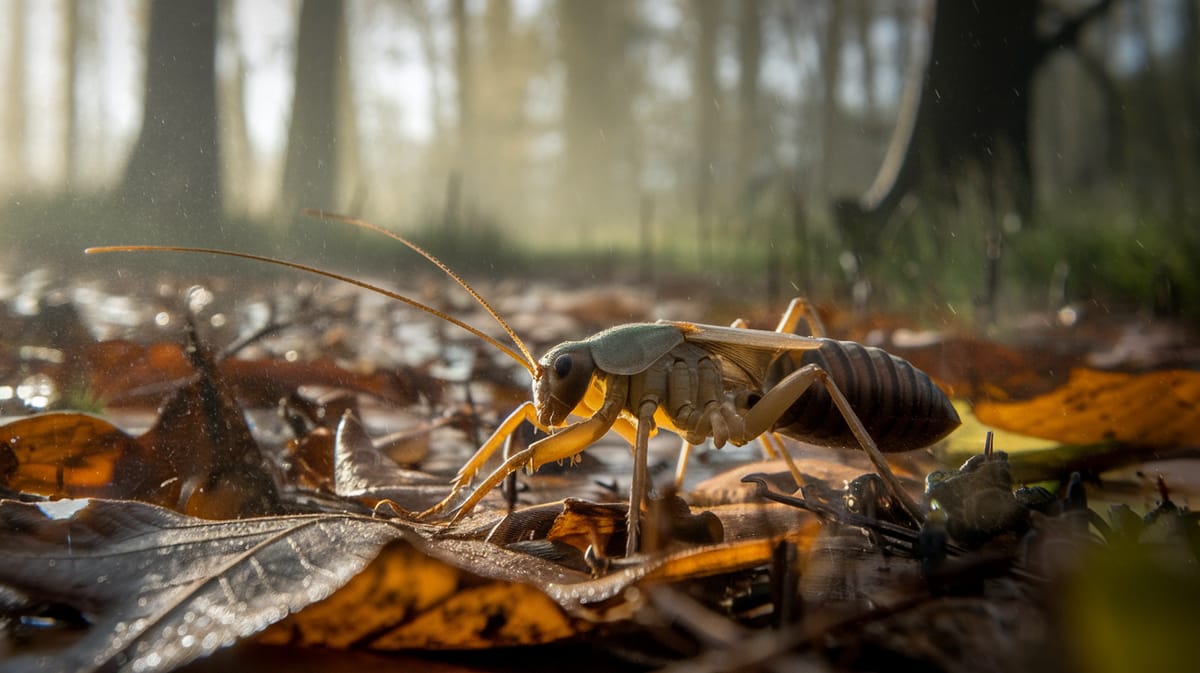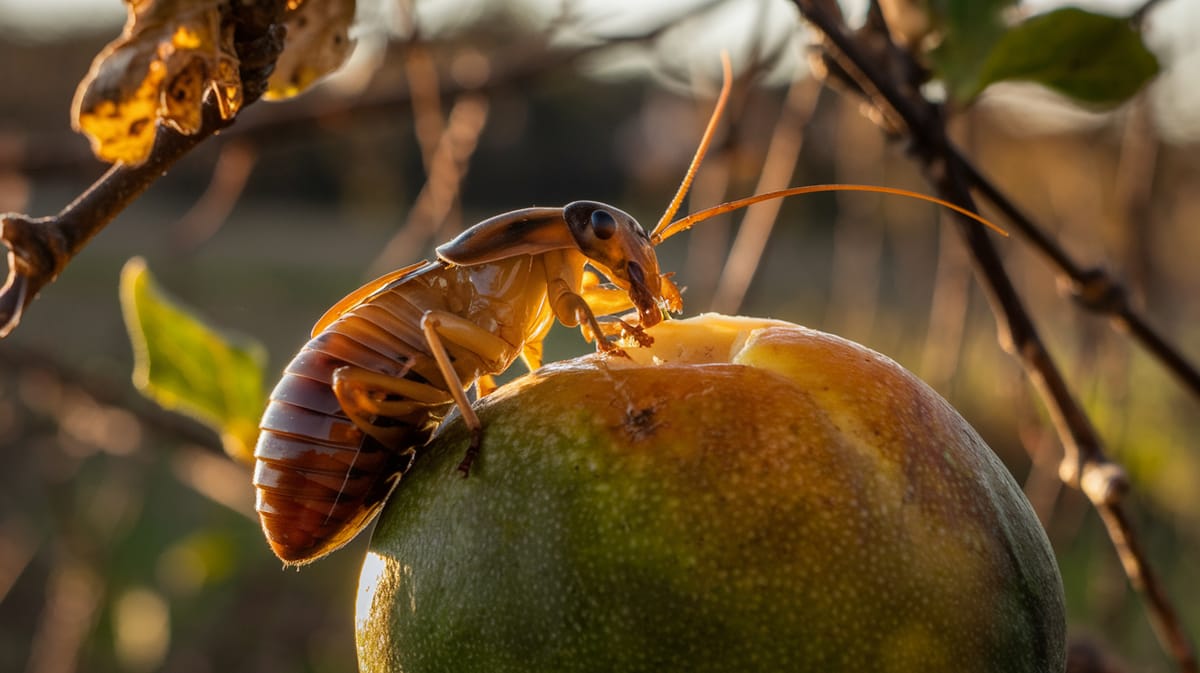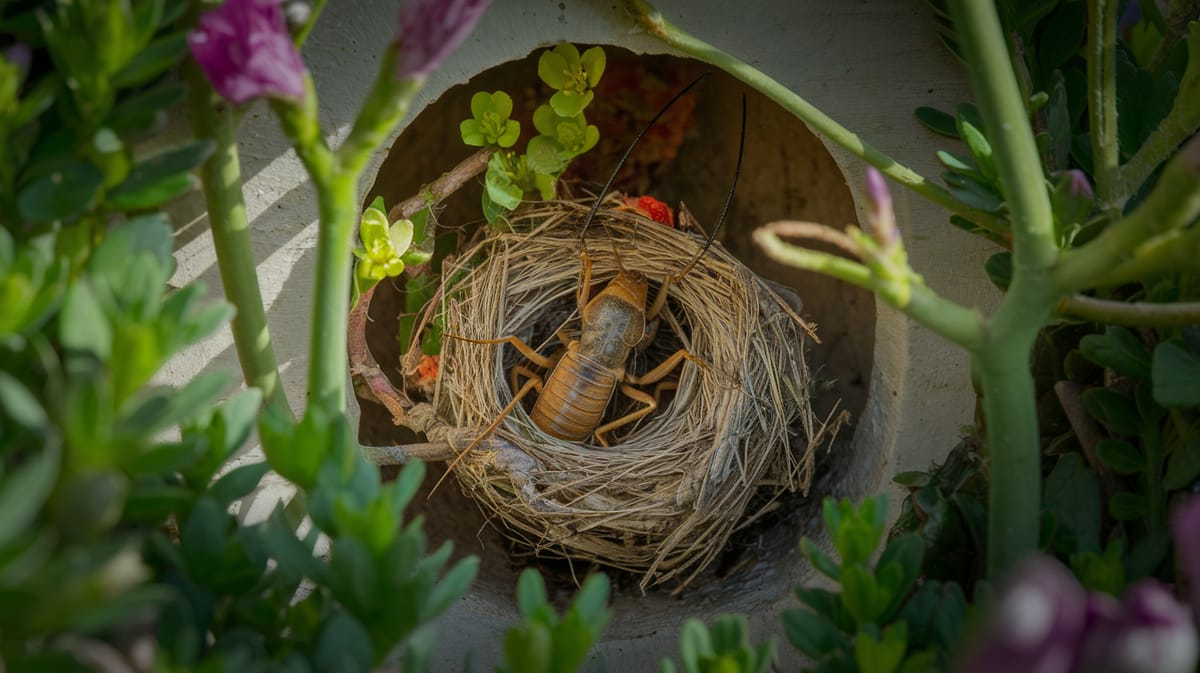Earwig
Armed with pincers and nocturnal habits, the Earwig thrives in diverse environments, playing a vital role in natural pest control and decomposition. Its intriguing maternal care sets it apart in the insect world.

Key Insights at a Glance
Did You Know?
Taxonomy & Classification
Earwigs are nocturnal insects with distinctive pincers and a flattened body, adapted to thrive in diverse environments as decomposers and predators. Let's understand the evolutionary journey and classification of these remarkable decomposers, predators.
Global Presence
Earwigs encompass around 2,000 species across 12 families, thriving on every continent except Antarctica.
Resilient Survivors
Originating over 208 million years ago, earwigs have survived significant climatic changes due to their adaptability and diverse habitats.
Lifecycle and Growth
A remarkable journey of transformation from Egg to Adult.
Egg
Female earwigs lay eggs in underground burrows, where they carefully tend and protect them until hatching.
Nymph
Nymphs resemble small adults, molting several times as they develop wings and mature features.
Adult
Adults are fully developed, with wings and pincers, focusing on reproduction and territorial behaviors.
Dietary Habits
A nocturnal omnivore with versatile feeding habits, this insect feeds on plant matter, small insects, and decaying organic material.
| DIET TYPE | DESCRIPTION |
|---|---|
| Primary Diet | Primarily consumes aphids, mites, and other small arthropods, aiding in pest control. |
| Secondary Diet | Occasionally eats tender plant shoots, flowers, and ripe fruits, showing its opportunistic nature. |
| Occasional | Rarely scavenges on decomposing plant material, fungi, and very small animal carcasses when other food is scarce. |

Behaviour and Adaptations
Discover the fascinating adaptations that empower earwigs to thrive in diverse environments.
Forceps Defense
Earwigs use their pincers to ward off predators and competitors.
Maternal Care
Female earwigs protect and clean their eggs until they hatch.
Nocturnal Foraging
They primarily feed at night, reducing predation risk.
Ecosystem Impact
Maintaining ecological balance through the diverse roles of the Earwig.
Natural Pest Control
Earwigs help control aphid populations, reducing the need for chemical pesticides.
Decomposer Role
By breaking down organic matter, earwigs enrich soil fertility and health.
Food Source for Predators
Serve as a food source for birds, frogs, and other small predators, supporting biodiversity.
Conservation Challenges
Understanding and addressing the major threats to Earwig populations.
Habitat Loss
Urbanization and agriculture reduce natural habitats, impacting earwig populations.
Chemical Exposure
Pesticides and pollutants harm earwigs and disrupt ecosystems.
Climate Change
Altered weather patterns affect breeding cycles and food sources.
Frequently Asked Questions
How long do Earwig live?
Earwigs typically live for about one year. They spend their early life as eggs and nymphs before reaching adulthood. Some may survive a bit longer, depending on environmental conditions and availability of food.
What do Earwig eat?
Earwigs are omnivorous, feeding on a variety of items. They eat plant matter, including flowers and leaves, and prey on small insects. They are also known to scavenge decaying organic matter.
Are Earwig poisonous?
Earwigs are not poisonous to humans. They do not produce venom or toxins. Though they may release a foul-smelling liquid when threatened, it is not harmful. Their pincers are used for defense and mating, not for injecting venom.
Are Earwig endangered?
Earwigs are not considered endangered. They are common and widespread across many regions. While some localized threats may exist, their overall population is stable. They thrive in various environments, from gardens to forests.
What do Earwig symbolize?
In various cultures, earwigs symbolize protection and resilience. They are often associated with the ability to navigate through challenges. In some folklore, they are seen as harbingers of good luck or change.
Do Earwig bite?
Earwigs do not bite humans. They have pincers, or cerci, at the end of their abdomen, which they may use defensively. These pincers can pinch skin but are not strong enough to cause injury or significant pain.
What color are Earwig?
Earwigs are generally brown, ranging from light tan to dark reddish-brown. Their color can vary slightly depending on their environment and species. They have a shiny, smooth appearance that helps them blend into their surroundings.
Does a Earwig have wings?
Yes, earwigs have wings. They possess two pairs of wings, with the hind wings being membranous and folded underneath short, leathery forewings. Despite having wings, many earwig species rarely fly and prefer to move by crawling.
What does a Earwig look like?
Earwigs have elongated bodies with pincers at their rear. They are typically brown and range from 5 to 25 mm in length. Their antennae are long and slender, and they have short forewings covering membranous hind wings.
Is a Earwig an insect?
Yes, a earwig is an insect. It belongs to the order Dermaptera, characterized by its distinctive pincers and elongated body. Like all insects, earwigs have a three-part body structure: head, thorax, and abdomen, and they possess six legs.
Related Insects
Discover insects with similar characteristics to Earwig - including shared habitats, diets, and taxonomic classifications
Share this profile
Help others discover Earwig
